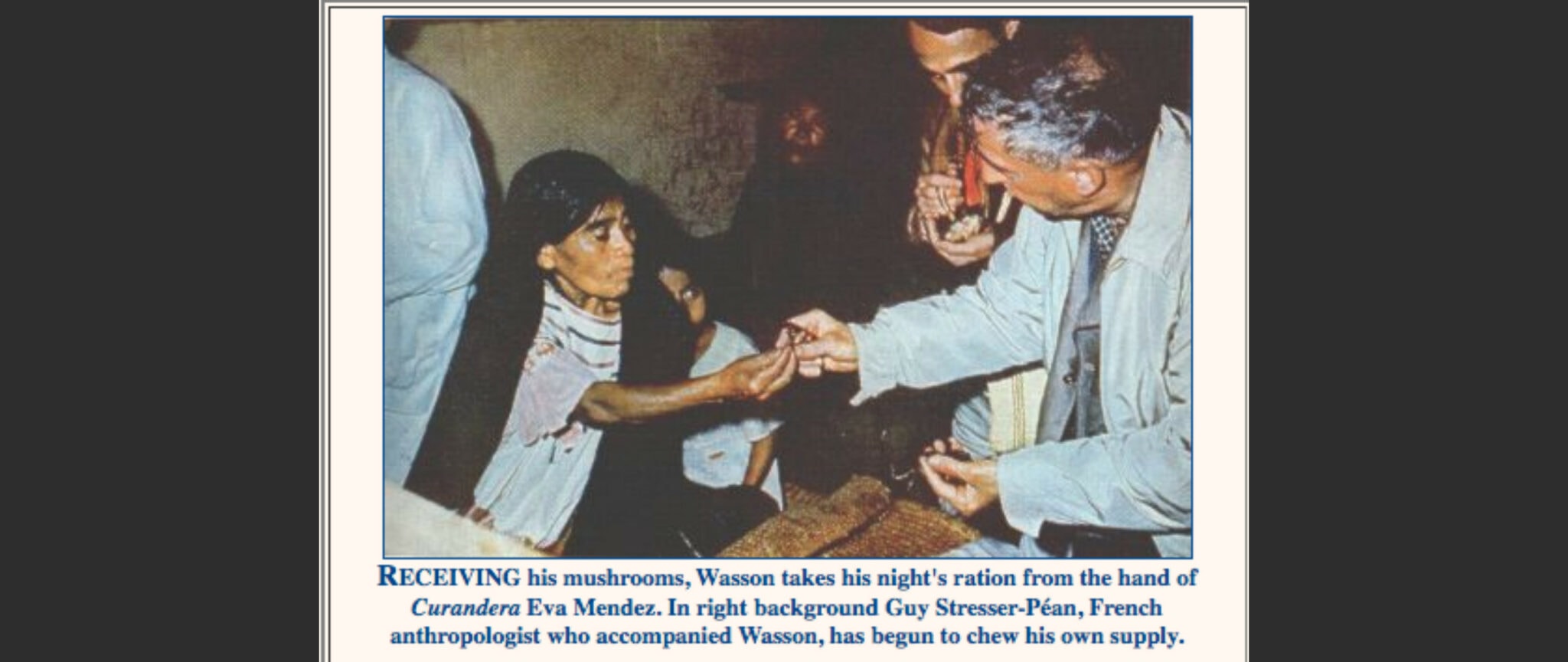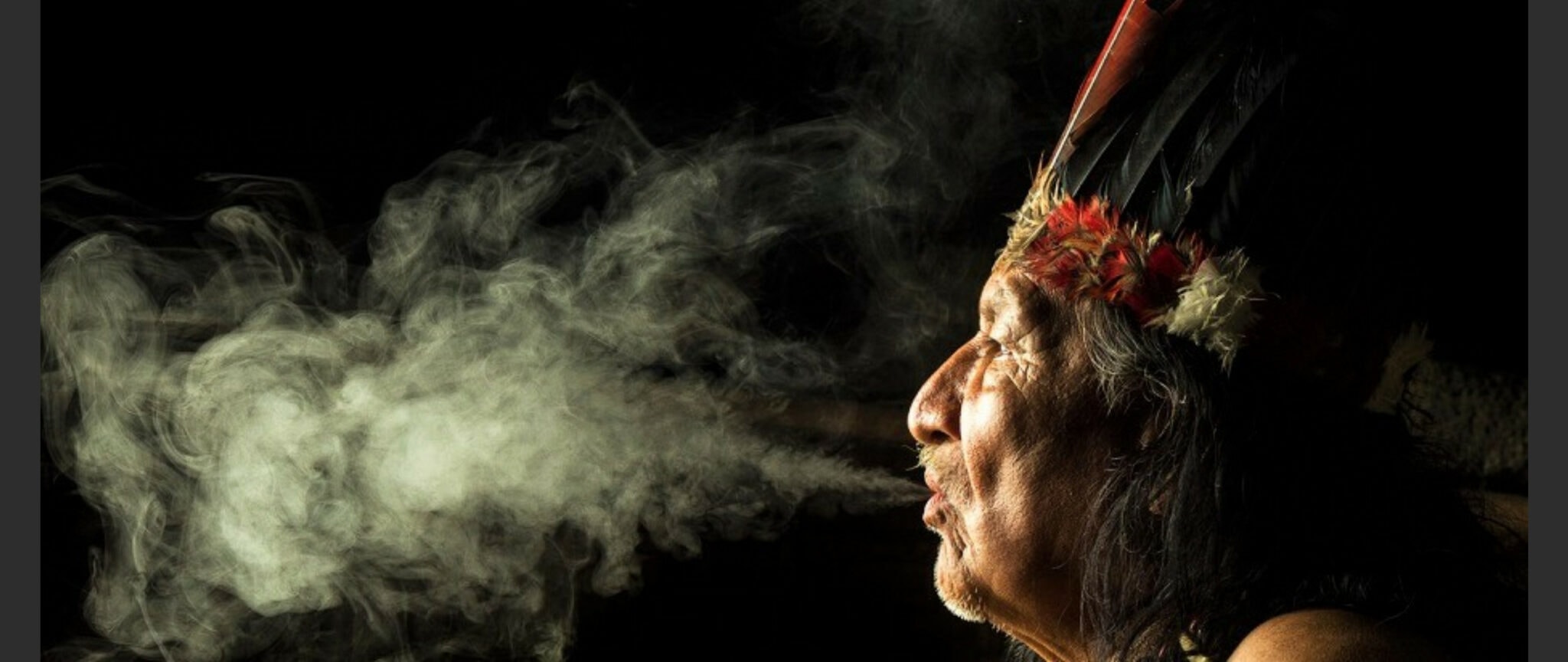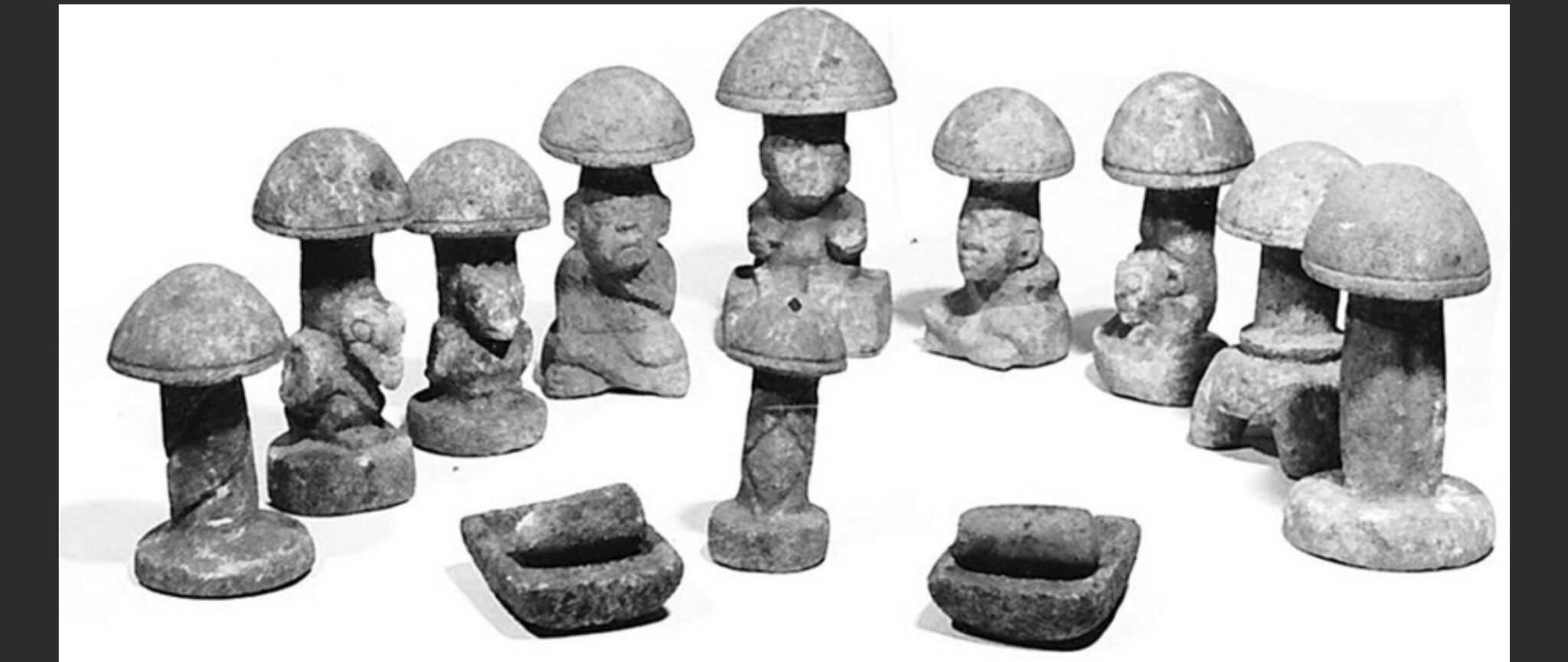A large portion of psychedelic culture, apart from the journey itself, is the history of its usage — especially in the case of natural psychedelics such as psilocybin (from magic mushrooms), ayahuasca or DMT. The colours, shapes, and feelings of euphoria bring you closer to the Earth and to creation. A spirituality that feels ancient, and emanates from deep within.
The Psychedelic Movement
In the 1960s the modern psychedelic movement began. It was the children of those who had experienced World War 2 that threw themselves into the technicolour world of mind-bending substances. They were disenfranchised with the grey industrialised surroundings of post-war. They longed for something they perceived as more innocent, a return to nature. Also, they probably just really enjoyed being high, maaan.
Seeking The Magic Mushroom…
This psychedelic wave (at least the chemical side) was triggered by a couple of events. Most notably the synthesis of LSD by chemist Albert Hoffman in 1943, and one now iconic magazine article. In 1957 Life magazine published an article from which almost the entirety of magic mushroom lore in the West sprang. The full title read
“Seeking the Magic Mushroom: A New Yorker banker goes to Mexico’s mountains to participate in the age-old rituals of Indians who chew strange growths and produce visions.”
The article written by R. Gordon Wasson, (the banker in question) featured he, his wife, and others from the journalistic party, partaking in a divine mushroom ceremony. It was officiated by the curandera known as Eva Mendez (later to be identified as Maria Sabina). In this story Wasson emphasised the ‘ancient-ness’ of the ritual. He pondered if these psychedelic mushrooms were from whence all spiritualism sprung. He stated
“…one is emboldened to the point of asking whether they may not have planted in primitive man the very idea of god.”

A decade later, in 1967, the ‘Summer of Love’ would occur, where up to 100,000 found ‘god’ in San Francisco. Much of the narrative of spiritualism, ancient rites, nature connection, and rejection of Western society followed on from Wasson’s article. And, from henceforth, this was the agreed legend of natural psychedelics. From the Mayans, to the Aztecs to the shamans of Siberia — a history of consuming and worshipping psychedelic mushrooms was woven from artifact, myth, and (perhaps biased) exploration by Westerners.
Secret, Spritual Practices
In 1971, when psychedelics were made illegal under the Convention of Psychotropic Substances, their use continued still. However, it was pushed underground. In this sense, the aura of the ‘other’ that psychedelics already had — secret, spiritual practices — worked well with their now prohibited status, and for some balanced out the risk. They may be illegal but they are part of ancient knowledge that the modern world doesn’t understand, etc, etc. Hence, many people still managed to enjoy and grow from the psychedelic experience.
But recently, this romantic history has been called into question for being just that. Namely, a romanticised and greatly exaggerated version of the truth. Could it be that these ayahuasca ceremonies are only so widespread because tourists will pay big bucks for them? Could it be that the Western insistence to exoticize other cultures meant they took something and blew it up? Do we all just love stories of mystery and magic and… mushrooms?
Questioning The Myths
A recent Vice article questioned just this. They reported on Austrian anthropologist Bernd Brabec de Mori’s 2011 research, which is one of a few sources that disputes the accepted psychedelics + shamanism mythology. Brabac de Mori spent 6 years in the Amazon. During this time he wrote a master’s thesis and completed a PhD, based around the Indigenous music and rituals. He also married a woman of the Shipibo tribe, had children, and became part of the community. Through this he gained rare and genuine knowledge of the culture around him. He arrived, like the typical tourist, believing that ayahuasca had been used by the Indigenous people for ‘millennia’. That it was ancient — and that it was totally interwoven into the fabric of their history. He quite quickly learned that this was not the case.
Stories For Tourists
Brabec de Mori realised that the stories he was told as an outsider, were not necessarily the truth. Rather they were a narrative that the Shipibo people believed that tourists wanted to hear. In actuality most of the Shipobo-Konibo people named the Kukama tribes as the ones that held the origins of the ayahuasca brew. Now, they were the first of the Amazonian tribes to be christianised by the Spanish conquest. And, rather than millenia ago, that was 500 years ago. Brabec de Mori found he could trace the diffusion of ayahuasca throughout the Amazon, by looking at the travel routes the Spanish missionaries had taken.
Ancient Rituals In Modern Language?
Additionally, the ayahuasca ritual songs that Brabec de Mori had come to research, became clues in his unravelling of the legend. While the Amazonian tribes speak a vast array of Indigenous languages and have many different rituals and songs, all words, phrases and songs relating to ayahuasca are markedly similar. They are almost always sung in Spanish or Quechua. Neither of these languages are native to the Amazon. In fact some of the Idigenous people in the region only remember ayahuasca appearing in the last 25-50 years. Following his research, Brabec de Mori now argues that ayahuasca and its rituals probably disseminated in the Amazon about 300 years ago — definitely NOT ancient!

There are also various other studies that support this idea. Notably, one by Martin Fortier, a PhD researcher, who’s project ‘Hallucinogenic Use Throughout History and Across Cultures’ was to be the most ambitious of its kind ever attempted. He aimed to survey over 1,000 different cultures. Sadly Fortier died before he could complete his research — before his death however, he published his findings thus far. He found that in pre-Columbian eras (so before 1492) psychedelic usage was isolated to South America and Mesoamerica. And, even in these regions it was limited to about 5% of the Idigenous population. Fortier acknowledged this was a generous estimate — probably less than 1% of the world’s population used psychedelics at this time.
So, Is It All A Psychedelic Fairytale?
Well, the jury is still out on this one. Many anthropologists, historians and researchers still maintain that the ancient art, writings and objects that represent psilocybin mushrooms and other psychedelics are proof enough. There is certainly a lot of evidence on this side too.

Grateful For The Mythology
However, whether these cultures have worshipped shrooms for millenia, or the West has just dreamed shamans to be a kind of psychedelic therapist — it cannot be denied the healing potentials of the substances themselves. Even if the history of psychedelics in ancient cultures turns out to be a mishmash of fact, folklore, rumours, lies and dreams, it has made possible new types of treatment for a whole host of ailments. These methods may have never been considered if the legends of healing mushrooms and plants had not dispersed across the world. And, if next time you trip you fancy calling up your inner shaman…. go for it!
So, ancient cultures using psychedelics — fact or fantasy? Let us know what you think in the comments!





